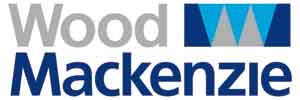 Oceaneering International, Inc. (NYSE: OII) has reported record quarterly earnings for the second quarter ended June 30, 2013. On revenue of $820.4 million, Oceaneering generated net income of $98.8 million, or $0.91 per share. During the corresponding period in 2012, Oceaneering reported revenue of $672.5 million and net income of $72.6 million, or $0.67 per share.
Oceaneering International, Inc. (NYSE: OII) has reported record quarterly earnings for the second quarter ended June 30, 2013. On revenue of $820.4 million, Oceaneering generated net income of $98.8 million, or $0.91 per share. During the corresponding period in 2012, Oceaneering reported revenue of $672.5 million and net income of $72.6 million, or $0.67 per share.
|
Summary of Results
(in thousands, except per share amounts)
|
|
| |
Three Months Ended
|
|
Six Months Ended
|
| |
June 30,
|
|
March 31,
|
|
June 30,
|
| |
2013
|
2012
|
|
2013
|
|
2013
|
2012
|
|
Revenue
|
$820,372
|
$672,545
|
|
$718,552
|
|
$1,538,924
|
$1,267,438
|
|
Gross Profit
|
201,864
|
161,158
|
|
160,375
|
|
362,239
|
284,461
|
|
Income from Operations
|
146,337
|
110,047
|
|
108,290
|
|
254,627
|
186,034
|
|
Net Income
|
$98,811
|
$72,554
|
|
$74,849
|
|
$173,660
|
$124,009
|
| |
|
|
|
|
|
|
|
|
Diluted Earnings Per Share (EPS)
|
$0.91
|
$0.67
|
|
$0.69
|
|
$1.60
|
$1.14
|
Year over year and sequentially, quarterly EPS increased as all business segments achieved higher operating income, led by Subsea Products and Subsea Projects.
M. Kevin McEvoy, President and Chief Executive Officer, stated, "Our quarterly EPS was above our guidance range, and was up 32% over the first quarter of this year and up 36% compared to the second quarter of 2012. Our above-guidance performance was attributable to sales of subsea hardware, demand for asset integrity services offshore Norway, and early completion of a theme park project. We achieved record quarterly operating income from Remotely Operated Vehicles (ROV), Subsea Products, Asset Integrity, and Advanced Technologies.
"Our outlook for the second half of this year remains very positive and essentially unchanged from last quarter. Given this outlook and our year-to-date performance, we are raising our 2013 EPS guidance range to $3.20 to $3.35 from $3.10 to $3.30. Compared to 2012, we continue to forecast income growth for all of our operating segments in 2013. Relative to the first half of 2013, we expect to generate higher operating income during the second half led by ROV and Subsea Projects.
"Compared to the first quarter, Subsea Products operating income rose on the strength of increased revenue and profitability from tooling and subsea hardware. Subsea Products backlog at quarter end was $902 million, up from our March backlog of $776 million and $621 million one year ago. The sequential and year-over-year increases in backlog were predominantly attributable to umbilical awards. During the quarter we announced two large umbilical contracts, one for offshore Egypt and one for the U.S. Gulf of Mexico (GOM).
"Subsea Projects operating income increased due to a seasonal uptick in GOM demand for deepwater intervention and an escalation of work under our field support vessel services contract offshore Angola. The work offshore Angola included the provision of another chartered vessel, the Maersk Attender, for half of the quarter. The charter term on the Maersk Attender runs through September 2013, followed by two 45-day renewal options, subject to our customer's work program.
.




 Drilling activity and spend will significantly increase in global deepwater markets over the next decade according to new analysis by
Drilling activity and spend will significantly increase in global deepwater markets over the next decade according to new analysis by